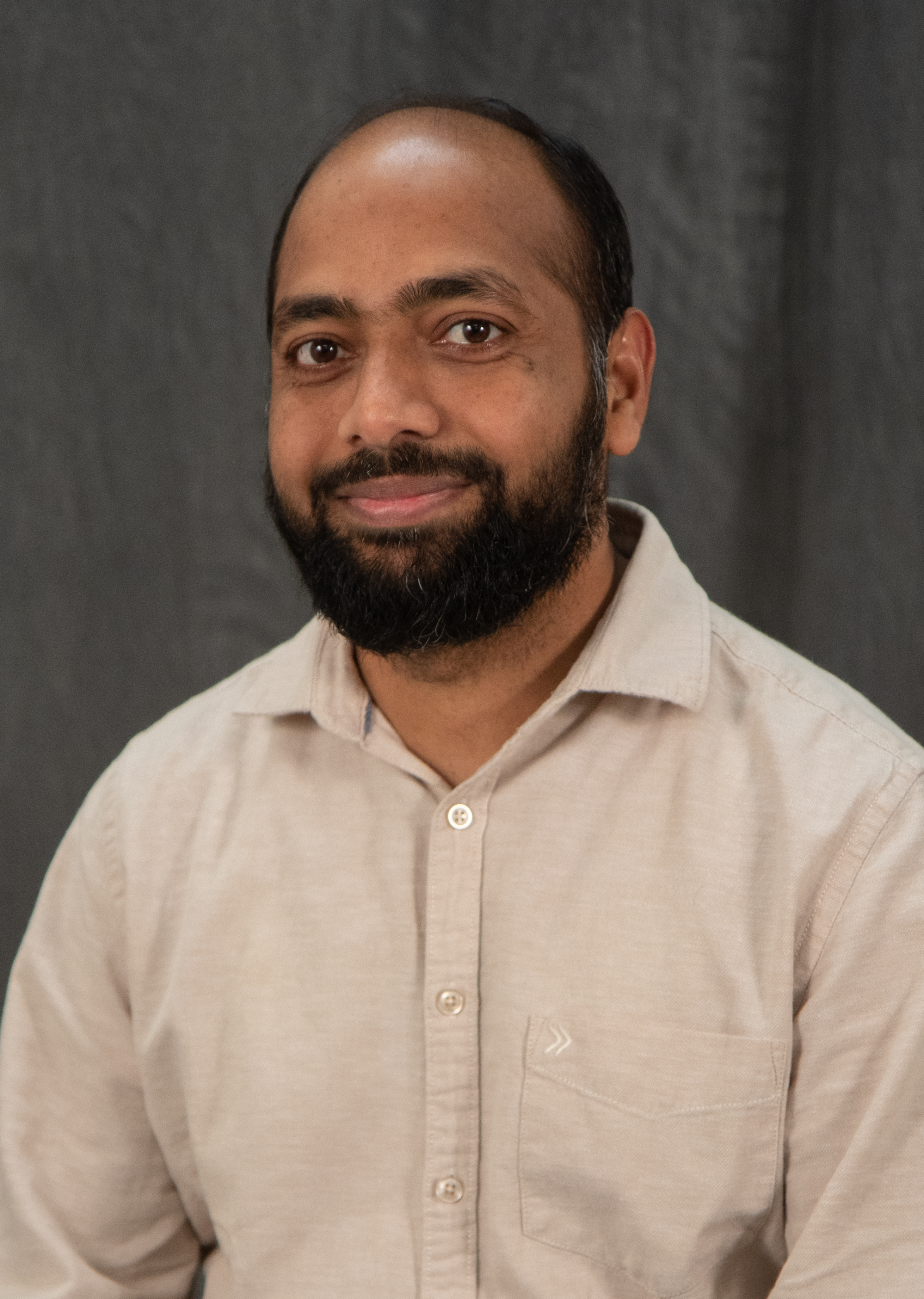Perwez Alam Ph.D.
Assistant Research Professor, College of Veterinary MedicineOffice Location: W109, Dept. of Biomedical Sciences alamp@missouri.edu
Research Interests
Ischemic heart diseases: molecular and cellular mechanism of cardiac rejuvenation associated protective signaling.
Research Description
My research focuses on alternative approaches to elicit cardiomyocyte-centric protective interventions for myocardial injuries. Cardiomyocytes are the unit of cardiac contractility and constitute about two-thirds of the total cardiac volume, therefore, play a significant role in maintaining the cardiac microenvironment. In the past decade, studies have demonstrated the pivotal role of paracrine signaling as a primary mechanism underlying various cellular and molecular-based interventions to repair cardiac injury. In fact, such approaches essentially rejuvenate the cardiac extracellular microenvironment to regulate signaling pathways across cell types and improve wound healing. However, the role of cardiomyocyte-mediated paracrine signaling to non-myocytes in defining the overall physiological, and pathological response in the heart after injury has yet to be determined. We have previously reported that the activation of the cell cycle in the adult cardiomyocytes through external interventions induces the cardiac rejuvenation-associated pathway and reprograms paracrine signaling from cardiomyocytes; which improves angiogenesis, cell survival, and immune response to restrict wound expansion. This signifies the importance of specific intercellular communication in cardiac health, disease, and therapeutic development. Therefore, our central premise is that paracrine signaling-mediated intercellular communication in the heart plays a critical role in restoring heart function and cardiac injury repair.
Our current research focuses on delineating the underpinning mechanism of cardiac rejuvenation and investigating its translational benefits for cardioprotection. In our laboratory, we utilize various cellular and molecular techniques in in vitro and in vivo setups, including transgenic mouse models. Our approach includes gene manipulation, omics-based analysis, secretome analyses, cardiac remodeling, cardiac wound healing, and heart function. The long-term goal of my research is to identify novel pathways and therapeutic targets for effective therapeutic interventions for injured hearts.
To this end, our specific research topics are:
- Investigating mechanisms of induced cardiac rejuvenation and associated mechanisms of cardioprotection.
- Delineating the critical cardiomyocyte-to-non-myocyte cellular cross-talk that mediates injury repair processes.
- Determining cardiomyocyte-specific stressors during myocardial injuries and defining cell-specific targets to enhance cardioprotective interventions.
Professional Background
- Obtained B.Sc. in Biological Sciences, Deen Dayal Upadhyay University, India.
- Obtained M.Sc. in Biotechnology, Jiwaji University, India.
- Obtained Ph.D. in cardiovascular biology, Savitribai Phule Pune University, India.
- Completed postdoctoral fellowship at the University of Cincinnati, USA.
- Research funded by the American Heart Association.
Selected Publications
- Waters R, Alam P, Pacelli S, Chakravarti AR, Ahmed RPH, Paul A. (2018). Stem cell secretome-rich injectable hydrogel for myocardial tissue repair. Acta Biomaterialia. 15;69:95-106.
- Alam P*, Haile B, Arif M, Pandey R, Rokvic M, Nieman M, Bryan D. Maliken, Paul A, Wang Y, Sadayappan S, Ahmed RPH, Kanisicak O. (2019). Inhibition of Senescence-Associated Genes Rb1 and Meis2 in Adult Cardiomyocytes Results in Cell Cycle Reentry and Cardiac Repair Post–Myocardial Infarction. (Journal of the American Heart Association, DOI: 10.1161/JAHA.119.012089). (*Co-corresponding author).
- Alam P*, Agarwal G, Kumar R, Mishra A, Saini N, Thinlas T, Mohammad G, Pasha MAQ. (2020). Susceptibility to high-altitude pulmonary edema is associated with circulating miRNA levels under hypobaric hypoxia conditions. American Journal of Physiology-Lung Cellular and Molecular Physiology. https://doi.org/10.1152/ajplung.00168.2020. (*Co-corresponding author).




